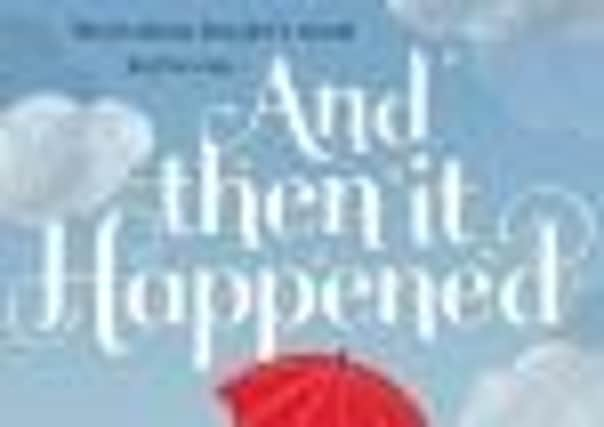Hidden tragedies in a world of troubled lives and loves


When people ask you how long it takes to write a novel, what they tend to mean is how long between writing Chapter one and The End.
In reality, of course, there’s far more to it than that. But my latest novel And Then It Happened involved a level of research far beyond anything I have encountered before.
Advertisement
Hide AdAdvertisement
Hide AdI didn’t know it at the time, but the research actually started 14 years ago when I interviewed someone whose life had been devastated by a coma. Jean Dennis’s 40-year-old husband John had suffered a heart attack during the ambulance dispute of December 1989. John’s brain was starved of oxygen during the journey to hospital in Coventry and by the time he arrived he was in a coma.
When I met John he had been in a persistent vegetative state for seven years, the past six of them having been spent at home being cared for by Jean, who had refused the offer of a long-term nursing home place. Unfortunately, John never recovered and he died in 2006, almost 17 years after slipping into the coma.
Jean and John’s story had a lasting impact on me and by the time I had to come up with an idea for my fourth novel, I felt I was ready to tackle it. Film and TV are littered with unrealistic portrayals of people waking up from comas and carrying on as if nothing had happened. In order to ensure I created something more realistic, I embarked on a lengthy period of research. For someone who flunked her O-level Biology, I ended up knowing a surprising amount about the human brain!
I contacted two charities whose help turned out to be invaluable. Headway, the brain injury association, provided information booklets and case studies which enabled me to work on possible scenarios for my story. I also visited Daniel Yorath House in Garforth, near Leeds, which is run by the Brain Injury Rehabilitation Trust, and interviewed staff including Andrew James a consultant in neuro-psychology and rehabilitation.
Advertisement
Hide AdAdvertisement
Hide AdAndrew provided some fascinating insights into how brain injuries change people and how family and friends struggle to come to terms with those changes. I also spoke at length to Jean Dennis, the woman I had first interviewed 14 years previously, and asked detailed questions both about the practicalities of caring for someone with a brain injury and the emotional strain of it all.
My task was then to apply my research to the characters and situation in the novel. Many unpublished writers make the mistake of thinking that every nugget of information uncovered during research needs to find its way into their novel. That is not the case at all. What that research allowed me to do was come up with a credible situation and develop an insight into how those involved may react as the story progressed.
I hope And Then It Happened will prove a moving and thought-provoking read. As a novelist, I believe that is my prime job. But if it also helps to increase awareness of the hidden tragedy of brain injuries, I will be very proud indeed.
And Then It Happened, set in Calderdale, is published by Headline Review (£6.99). For more information on Linda and her books go to www.linda-green.com
Review: And Then It Happened ****
Linda Green, Headline Review
Advertisement
Hide AdAdvertisement
Hide AdMel and Adam met as teenagers. They have been together and in love for 20 years, 10 of them as the most happily married young couple (complete with adorable daughter) that they, or any of their family, friends and wider acquaintance, know.
They are blessed. But college lecturer Mel is pessimistic by nature, and has a dark secret. While Adam urges her to live for the present, she wonders if something , is about to burst their blissful bubble?
And Then It Happened is the story of how this Calderdale couple copes when, on the eve of their 10th wedding anniversary, Adam has an accident which results in brain injury and coma. What unfolds is narrated alternately by Mel and Adam, although in this unusual novel, nothing is quite as it seems.
It’s no accident that Linda Green makes Adam a reporter (for the Yorkshire Post) turned museum Press officer, as it was while she herself was a journalist that she met Jean Dennis, who looked after her brain-injured husband, John, until his death. In Green’s gentle, intelligent hands, a difficult subject is treated with a delicacy that allows her to blend humour with uncomfortable reality in a thoughtful, honest manner that will chime with many whose lives have been touched by illness or injury.
Green breaks down some of the mythology that surrounds coma patients and her book is both entertaining and thought-provoking, leaving the reader with much to ponder on the nature of life and love.